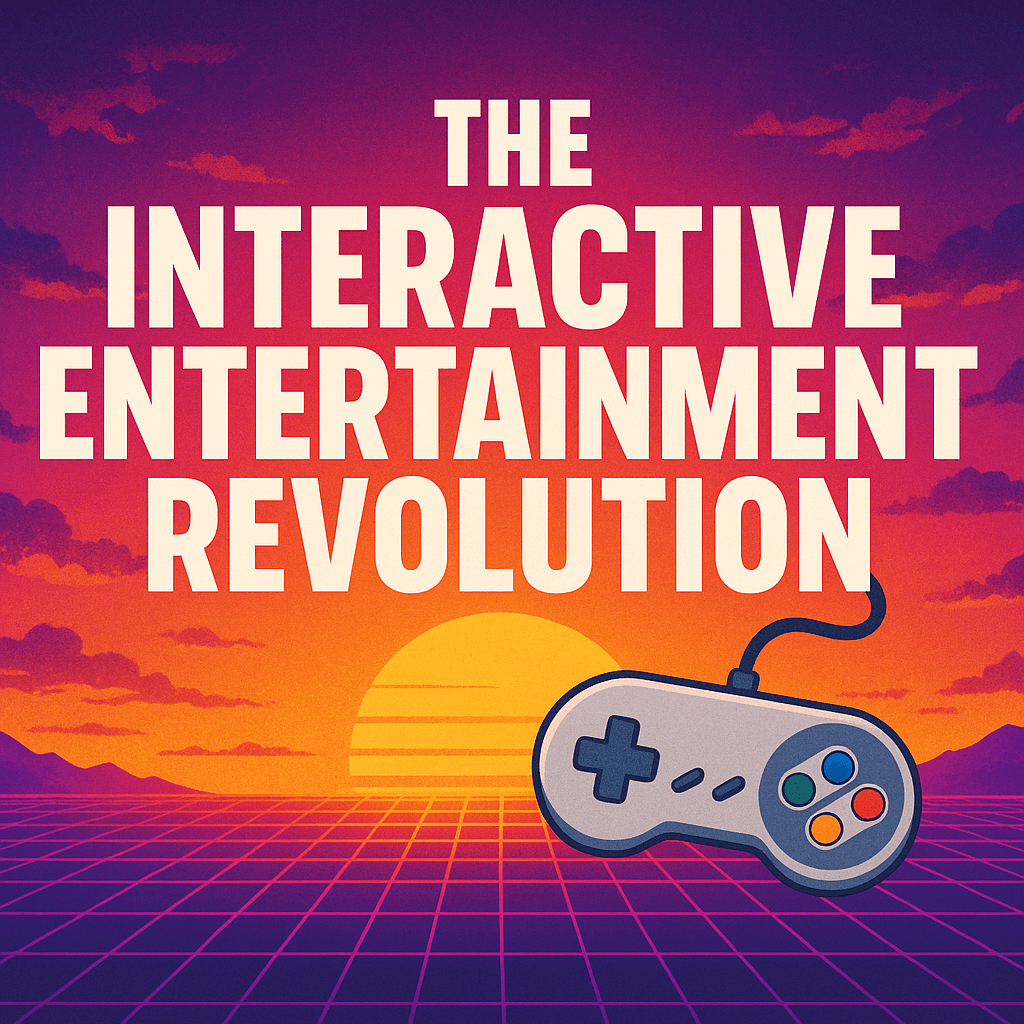The entertainment industry is massive. There are as many entertainment options available as there are people on the planet. A form of entertainment that has experienced enormous growth in recent years is interactive entertainment. People seeking entertainment no longer want to be fed passive entertainment experiences such as television and radio. Their desire for dynamic, user-driven experiences has resulted in the surging popularity of interactive entertainment experiences.

Contents
What is Interactive Entertainment?
Simply put, interactive entertainment is any form of entertainment that is shaped by or reacts to user choices and actions. Comprising digital tools and media, interactive entertainment facilitates real-time engagement between the user and entertainment media. Online and mobile games are popular examples of interactive entertainment.
The Evolution of Digital Entertainment
Digital entertainment has gone through a dramatic evolution since the early analog era of radio and television. Even in the analog era of entertainment, interactive media always outperformed traditional passive media. Early forms of interactive media and entertainment included:
- Calling into radio stations to request specific songs or chat with the radio show host.
- Using mobile hotlines to allow television viewers to communicate with live television shows.
- Console video games provide players with interactive gaming experiences.
These days, almost every form of digital entertainment contains an interactive aspect. Modern mobile and online games are the best examples of interactive entertainment. Many of these games offer multiplayer and interactive modes, which allow players from across the globe to play and interact in real-time.
Another growing interactive gaming sector is the iGaming industry, which allows players to use real-world assets to play for in-game prizes that can be redeemed in the real world. iGaming’s popularity has grown significantly around the world. For instance, fast withdrawal casino australia platforms have garnered millions of users due to offering large game libraries, lightning-fast payouts through flexible transaction methods, and generous bonuses like welcome rewards, cashback offers, and free spins. Online and iGaming platforms are leading the charge for interactive entertainment’s popularity, thanks to their ability to blend the real world with digital entertainment.
Technological Innovation Boosting Interactive Entertainment
Hardware and software innovations over the last few decades have been major driving forces behind the rise of interactive entertainment. Technological growth and the evolution of the internet have further advanced the adoption of interactive entertainment. A few key technological innovations that shaped interactive entertainment include:
- Advanced internet connectivity and the rise of 5G networks: Faster internet speeds and lower internet costs have increased accessibility to online digital entertainment platforms. The faster internet speeds mean games and streams can load without lag.
- Cloud computing: Advancements in cloud computing have reduced the need for bulky hardware. Modern entertainment platforms run on cloud infrastructure, allowing them to be accessed from anywhere in the world and on smaller, smart devices.
- Augmented reality (AR) and virtual reality (VR): AR and VR technology enable immersive experiences, allowing users to interact with the real world through digital overlays.
The Social Aspect: Interactive Entertainment’s Community and Connection
One of the appeals of interactive entertainment lies in its inherent social engagement. Interactive platforms such as live streaming services and multiplayer games create shared spaces. Platforms like Twitch and TikTok create spaces for online communities to come together and interact with each other and their favorite creators. These interactions fulfill many people’s social needs, like belonging to a group, recognition, and feedback.
Popular examples of online communities existing in interactive entertainment spaces include online gaming lobbies and forums, live stream watch parties, and social media groups. These communities bring like-minded people together and create a space for them to engage and communicate about shared interests.
User Control and Personalization
Another appeal of interactive entertainment is the level of control it gives users. Online and mobile games provide players with the ability to build their own narratives and control their own worlds within the game’s existing universe. Games that provide players with more autonomy over the game environment generally provide greater immersion and satisfaction.
Personalization is another factor behind the growth of interactive entertainment. Algorithms are becoming more advanced thanks to AI innovation and integration. By implementing these advanced AI-driven algorithms, platforms can create game experiences and recommendations tailored to players. Data collection and tracking allow these algorithms to detect player behavior and patterns, resulting in better algorithmic predictions.
The Psychology Behind Engagement
Interactive entertainment is thriving thanks to its ability to tap into human psychology. The human brain craves feedback and rewards and has evolved chemical responses that release a dose of hormones that make the brain feel good. These hormones, like dopamine and serotonin, are released when the brain experiences progress or rewards in the game. When released into the brain, these hormones trigger pleasure responses within the brain.
Beyond the cocktail of feel-good hormones released into the brain, interactive entertainment also develops a sense of agency within the user or player. This sense of agency makes them feel that their decisions matter. Emotional engagement is reinforced through features such as personalized challenges or daily game streaks. This turns players and users from passive observers into active participants.
Final Thoughts
There is no doubt that the future of entertainment is interactive and immersive. As technology advances, the gaps between digital and physical spaces will continue to be bridged. Right now, the attention is on AR and VR, and the potential these technologies have for creating new interactive experiences for users.
Further innovation in AI is also going to increase interactive experiences. Platforms developed in the future may be able to create custom gaming experiences with personalized storylines for individual players. This personalization will be driven by AI-powered data collection and tracking, allowing entertainment providers to craft unique and engaging interactive content tailored to users’ behaviors.



